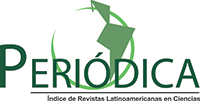Adhesion to the practice of hand hygiene by professionals in the health area in a University Hospital
DOI:
https://doi.org/10.5216/ree.v12i2.7656Keywords:
Handwashing, Cross infection, Health personnelAbstract
The hand washing (HW) is the most simple and effective and less costly in the control of infections related to health care. This study aims to evaluate the adhesion of professional health care as the practice of hand hygiene. Quantitative research, descriptive type, conducted through a database of the Department of Infection Control from a teaching hospital in the Midwest region. The analysis was performed using SPSS version 16.0. Were analyzed 1316 opportunities HW, these 951 (72.3%) did not occur to the adhesion of this practice. For the situations that not occurred adhesion, stands before the completion of non-invasive procedure with the patient with 24%. The adhesion to HW in accordance with the standards regulated by the relevant authorities, it not incorporated into the daily practice of health professionals that institution and thus educational in order to guide and motivate these professionals to practice correctly and often must HW be discussed and implemented.
Downloads
References
Sousa CMM, Alves MSF, Moura MEB, Silva AO. Os direitos dos usuários da saúde em casos de infecção hospitalar. Rev Bras Enferm. 2008;61(4):411-7.
World Health Organization, World Alliance for Safer Health Care. WHO Guidelines on Hand Hygiene in Health Care. First Global Patient Safety Challenge Clean Care is Safer Care. Geneva: WHO Press; 2009.
Agência Nacional de Vigilância Sanitária, Ministério da Saúde. Manual de segurança do paciente – higienização das mãos em serviços de saúde. Brasília: ANVISA/MS; 2008. 100 p.
Rocha LA, Borges LFA, Filho PPG. Falta de adesão à lavagem de mãos, ação irritante do uso de sabão e luvas e sua influência na microbiota qualitativa e quantitativa das mãos de enfermeiros. NewsLab. 2007;82:114-22.
World Heath Organization. The WHO Guidelines on hand hygiene in health care (Advanced Draft). Global Patient Safety Challenge 2005-2006: “Clean Care Is Safer Care”. Geneva: WHO Press, 2006. 205 p.
Semmelweis I. The etiology, concept and prophylaxis of childbed fever [excerpts]. In: Buck C, Llopis A, Najera E, Terris M, editors. The challenge of epidemiology—issues and selected readings. Washington: PAHO Scientific Publication; 1988. p. 46-59.
Oliveira AC, Werly A, Ribeiro MR, Neves FAC, Fernandes Junior FF, Oliveira Junior FS. Handwashing adhesion between the multiprofissional team of the infantile intensive care unit. A descriptive study. Online Braz J Nurs. [Internet]. 2007 [cited 2010 jun 30];6(1). Available from: http://www.uff.br/objnursing/index.php/nursing/issue/view/6
Neves ZCP, Tipple AFV, Souza ACS, Pereira MS, Melo DS, Ferreira LR. Hand hygiene: the impact of incentive strategies on adherence among healthcare workers from a newborn intensive care unit. Rev Lat Am Enfermagem [Internet]. 2006 [cited 2010 jun 30];14(4):546-52. Available from: http://www.scielo.br/pdf/rlae/v14n4/v14n4a12.pdf
O'Boyle CA, Henly SJ, Larson E. Understanding adherence to hand hygiene recommendations: the theory of planned behavior. Am J Infect Control. 2001;29(6):352-60.
Kunzle SEM, Pereira CS, Alves KC, Pelá NTR, Gir E. Auxiliares e técnicos de enfermagem e controle de infecção hospitalar em centro cirúrgico: mitos e verdades. Rev Esc Enferm USP. 2006;40(2):214-20.
Ministério da Saúde; Conselho Nacional de Saúde. Resolução Nº 196/96 – Normas regulamentadoras de pesquisa envolvendo seres humanos. Brasília: Ministério da Saúde; 1996.
Scheidt KLS, Carvalho M. Avaliação da prática da lavagem das mãos pelos profissionais de saúde em atividades lúdico-educativas. Rev. enferm. UERJ. 2006;14(2):221-5.
Won SP, Chou HC, Hsieh WS, Chen CY, Huang, SM, Tsou KI et al. Handwash¬ing program for the prevention of nosocomial infections in a neonatal intensive care unit. Infect Control Hosp Epidemiol. 2004;25(9):742-6.
Mendonça AP, Fernandes MSC, Azevedo JMR, Silveira WCR, Souza ACS. Lavagem das mãos: adesão dos profissionais de saúde em uma unidade de terapia intensiva neonatal. Acta. Sci. Health. Sci.. 2003;25(2):147-53.
Boyce JM, Pittet D, Healthcare Infection Control Practices Advisory Committee; HICPAC/SHEA/APIC/IDSA Hand Hygiene Task Force. Guideline for Hand Hygiene in Health-Care Settings: recommendations of the Healthcare Infection Control Practices Advisory Committee and the HICPAC/SHEA/APIC/IDSA Hand Hygiene Task Force. Infect Control Hosp Epidemiol. 2002;23(Suppl.12):S3-40.
Schneider J, Moromisato D, Zemetra B, Rizzi-Wagner L, Rivero N, Mason W, Imperial-Perez F, Ross L. Hand hygiene adherence is influenced by the behavior of role models. Pediatr Crit Care Med. 2009;10(3):360-3.
Martinez MR, Campos LAAF, Nogueira PCK. Adesão à técnica de lavagem de mãos em Unidade de Terapia Intensiva Neonatal. Rev Paul Enferm. 2009;27(2):179-85.
Kampf G, Kramer A. Epidemiologic background of hand hygiene and evalu¬ation of the most important agents for scrubs and rubs. Clin Microbiol Rev. 2004;17(4):863-93.
Correa I, Ranali J, Pignatari ACC. Observação do comportamento dos profissionais em relação ao procedimento da lavagem das mãos no plano assistencial à criança internada. Nursing (São Paulo). 2001;4(42):18–21.
Downloads
Published
Issue
Section
License
Copyright (c) 2010 Revista Eletrônica de Enfermagem

This work is licensed under a Creative Commons Attribution 4.0 International License.














